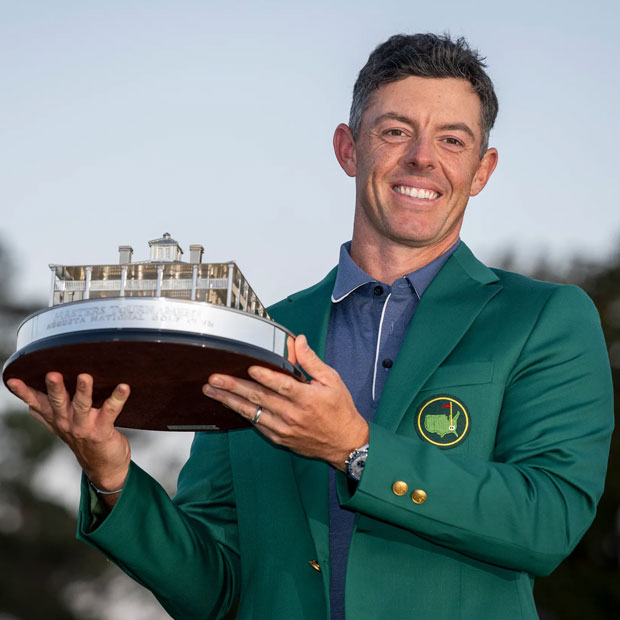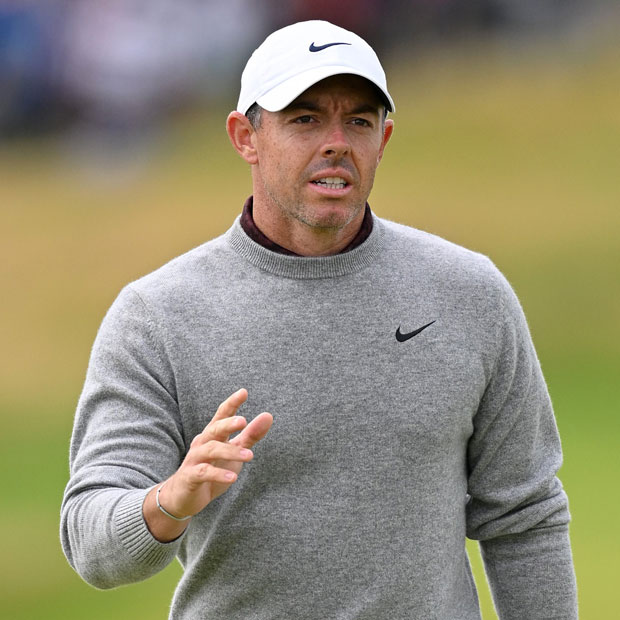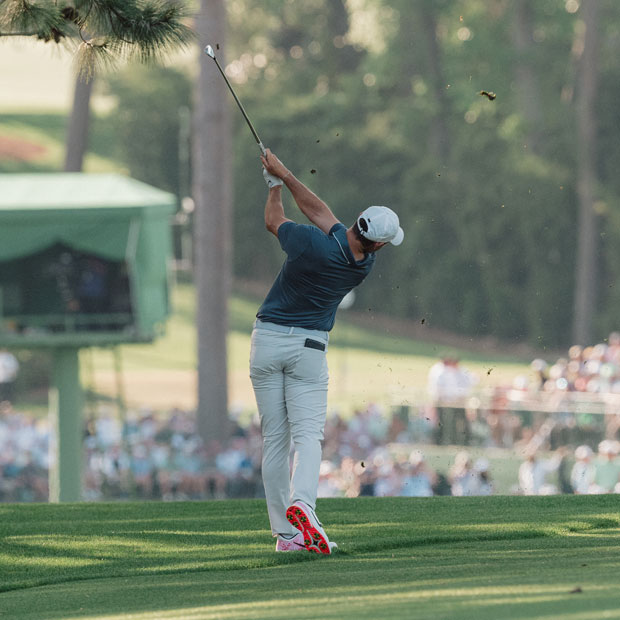Attempting to Square the Angle Debate
Debating the relative scoring benefits of a good angle vs. a bad angle on the PGA Tour


On Wednesday, No Laying Up released a podcast with Golf Channel and NBC analyst Brandel Chamblee. Throughout the conversation, Chamblee explains his position on distance, the irrelevance of angles, rough as a necessary ingredient to challenge the best golfers in the world, and more. While I agree with some of what Brandel had to say, I strongly disagree with a few of the most fundamental points he expressed on the podcast.
A little over 30 minutes in, Chamblee states that “if you give players the better angle into a hole location versus on the other side of the fairway where they have the worst angle, at every single distance, the worst angle, on average, scores better than the one with the best angle on tour.” I have no idea what data Brandel was fed to reach this conclusion, and I’m skeptical that he could explain how these calculations are derived, but his claim runs counter to any data I’ve ever seen or analyzed. Brandel should be pressed for more details on how he reached this conclusion.
I tried to roughly recreate the calculation Brandel references based on his description in the podcast. I pulled some shots, limiting the data set to second shots from fairway lies on par 4s longer than 400 yards. I defined a “Good Angle” as a shot from the right side of the fairway to a left pin or a shot from the left side of the fairway to a right pin, per Brandel’s wording. Here are the results:

The numbers show that there is neither advantage or disadvantage to having Brandel’s definition of an advantageous angle. I am highly skeptical of the data Brandel saw to conclude that players score worse from a better angle, and assertions like that should be scrutinized. Not all data-driven insights are correct, after all. The data-driven insights I provide should be challenged, too.
Nevertheless, the data I’ve provided seems to back up Brandel’s central claim that angles don’t matter. However, the above definition is a pretty imprecise way to classify angles. We should try to get more precise when possible. Fortunately, I have data from an analysis I did a couple of years ago that paints a better picture of the value of angles. For every shot, I calculated how many feet of green there were between the approach shot location and the flag on a direct line. Instead of simply considering a shot from the right side of the fairway to a left flag as a “good angle,” this analysis considers a shot with ample feet of green to work with as a “good angle.” I’d contend that this is a better (albeit more complicated) definition of a good angle.
The data showed that under this definition, there is virtually zero benefit to having a good angle from wedge distances in the fairway. This result makes sense, as professional golfers are consistently able to stop shots on the green immediately from the fairway with a short iron in hand. However, for shots with longer irons (180-250 yards), the data showed between a 0.10 and 0.15 stroke advantage in having ample green with which to work.
These results are intuitive: the more a golf ball bounces and rolls, the more having an advantageous angle matters. In professional golf, tour players hit the ball so high and with enough spin that angles rarely matter, a reality exacerbated by the ever-increasing distances at which players hit the golf ball resulting in shorter approach distances.
So do angles matter? Yes, just not very much. They’d matter more after a significant rollback, but even under those conditions, I agree with Brandel’s argument that golfers should not take on risk to hunt advantageous angles. Pursuing angles of charm at the risk of finding rough or a penalty hazard is not worth the marginal benefit of a good angle.
Thus, Brandel concludes, the best and only way to challenge a professional golfer is with thick rough. He goes on to ponder whether we want rough that produces a penalty of 0.3 strokes, or 0.4, or maybe even 0.6? The underlying assumption is that the combination of fairway width and rough length are the only variables that dictate how much a golfer is rewarded for driving the ball accurately, which is just not the case. All elements of a golf course design must work in concert to produce a holistic test for professional golfers, as I wrote about earlier in the week in a free public post about how Muirfield Village rewards driving accuracy. For reference, finding the rough at Memorial is typically about a 0.45 stroke penalty, which isn’t solely due to the length of the rough, as outlined in the linked written piece.
To understand how driving accuracy is tested, one must consider the entire design and strategy of a golf hole, not just look at the length of rough. When Brandel says within the podcast that this is a “setup conversation more than an architecture discussion,” he implicitly dismisses the importance of design, which is a crucial component in any test of top players. It also may explain why he continues to insist that we should all marvel at how straight Bryson DeChambeau drives the golf ball, an assertion that falls apart when you dig into which courses Bryson has succeeded on and which courses have given him trouble. Spoiler: he tends to do well on golf courses with thick rough and narrow fairways that fail to punish wide misses, because contrary to Chamblee’s claims, those golf courses don’t always equate to rewarding driving accuracy.
One final point I’d like to submit for your consideration: all of the data upon which Brandel Chamblee and I are basing our findings is PGA Tour data. The data comes from PGA Tour courses, many of which are soft, feature 33-yard wide fairways, and are played with wedges in hand. If every data point in the data set were with a five iron into firm greens on 80-yard wide fairways downwind, the value of angles might show up in the data a little bit differently.
To close things out, I don’t disagree with everything Brandel said. In some ways, much of what I’ve argued within this piece isn’t that far off from many of his assertions. But the ways in which Brandel should be challenged have important implications. Thick rough is not the only way to test professional golfers. Often, in fact, thick rough fails to adequately test professional golfers (see Valhalla Golf Club). Meanwhile, some of the best tests in professional golf (see Augusta National) don’t rely on thick rough to test the skill and strategy of the best players in the world. Thick rough isn’t the only way to reward accuracy, but to fully embrace that, you’d need to put some effort into understanding golf course design.
Be careful going too far down that path, though. You might end up concluding that architecture matters, and that the game board upon which the sport is played would benefit from a rollback.
This piece originally appeared in the Fried Egg Golf newsletter. Subscribe for free and receive golf news and insight every Monday, Wednesday, and Friday.
Leave a comment or start a discussion
Engage in our content with thousands of other Fried Egg Golf Club Members
Engage in our content with thousands of other Fried Egg Golf Members
Get full access to exclusive benefits from Fried Egg Golf
- Member-only content
- Community discussions forums
- Member-only experiences and early access to events











Leave a comment or start a discussion
Lorem ipsum dolor sit amet, consectetur adipiscing elit. Suspendisse varius enim in eros elementum tristique. Duis cursus, mi quis viverra ornare, eros dolor interdum nulla, ut commodo diam libero vitae erat. Aenean faucibus nibh et justo cursus id rutrum lorem imperdiet. Nunc ut sem vitae risus tristique posuere. uis cursus, mi quis viverra ornare, eros dolor interdum nulla, ut commodo diam libero vitae erat. Aenean faucibus nibh et justo cursus id rutrum lorem imperdiet. Nunc ut sem vitae risus tristique posuere.